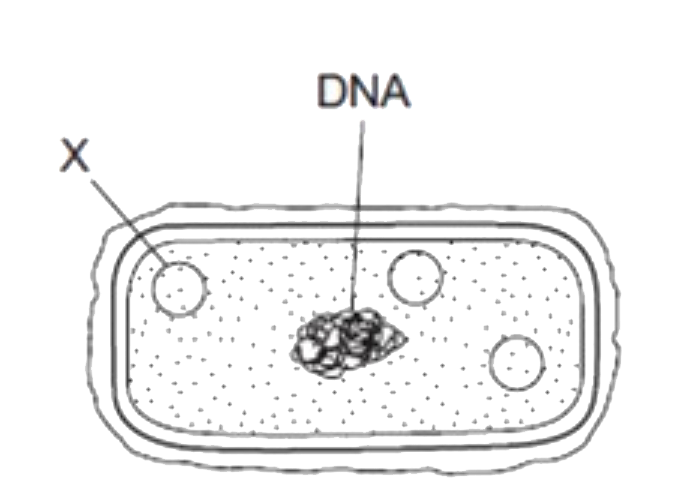Bacterial cells are examples of:
eukaryotic cells
prokaryotic cells
organs
organelles
The correct Answer is:B
Step-by-Step Solution:
1. Identify the Type of Cell: We need to determine what type of cells bacterial cells are classified as.
2. Understand Cell Classification: Cells are generally classified into two main categories: prokaryotic and eukaryotic. Prokaryotic cells are simpler and do not have a defined nucleus, while eukaryotic cells have a defined nucleus and membrane-bound organelles.
3. Characteristics of Bacterial Cells: Bacterial cells are unicellular organisms. They lack a true nucleus; instead, they have a region called the nucleoid where their genetic material (DNA) is located. This DNA is often in a supercoiled form.
4. Cell Structure: Bacterial cells have a cell wall made of peptidoglycan and may have an outer layer of mucilage. They do not possess membrane-bound organelles like endoplasmic reticulum or Golgi apparatus.
5. Conclusion: Given these characteristics, bacterial cells fit the definition of prokaryotic cells, as they lack a true nucleus and membrane-bound organelles.
6. Final Answer: Therefore, bacterial cells are examples of prokaryotic cells.
---
Topper's Solved these Questions
- CELL : THE UNIT OF LIFE Book:ICSEChapter:CELL : THE UNIT OF LIFE Exercise:Test Your Progress (Fill in the blanks with appropriate words)
Explore 29 Videos
- CELL : THE UNIT OF LIFE Book:ICSEChapter:CELL : THE UNIT OF LIFE Exercise:Test Your Progress (State whether the following statements are true or false )
Explore 45 Videos
- CELL - THE UNIT OF LIFEBook:ICSEChapter:CELL - THE UNIT OF LIFEExercise:REVIEW QUESTIONS (LONG ANSWER TYPE QUESTIONS)
Explore 14 Videos
- CELL CYCLE AND CELL DIVISION Book:ICSEChapter:CELL CYCLE AND CELL DIVISION Exercise:REVIEW QUESTIONS ( LOOK AT THE FIGURE BELOW)
Explore 2 Videos
Similar Questions
Given below are different steps of transformation in a bacterial cell. Arrange them in correct sequence. (i) Heat shock (at 42°C) (ii) Treatment of bacterial cell with divalent cations at 4°C (iii) Bacterial cells are incubated with recombinant DNA on ice (iv) Recombinant/Transformed bacteria are plated and kept at 37°C
View SolutionBacterial cell membrane has
View Solution
Knowledge Check
The bacterial cell wall is composed of :
ApeptidoglycanBligninCsuberinDcellulose
Bacterial cell has a true nucleus. Is it true or false.
View SolutionDescribe the structure of bacterial cell and methods of genetic recombination in bacteria.
View SolutionThe bacterial cell made competent to absorb the plasmid DNA by treating with a specific concentration of
View SolutionThe diagram shows the structure of a bacterial cell.

The presence of structure C in the bacterial cell is one reason why bacteria are used in genetic engineering . In the cloning vector pBR322, which gene is responsible for the replication of structure X ?
View Solution[A] : The Phages which caused lysis of bacterial cell are called virulent phages .
[R] : The viral DNA controls the metabolic machinery of the host cell .
View SolutionBacterial cells can be stained with
View SolutionPeptidoglycan present in bacterial cell envelope is
View Solution